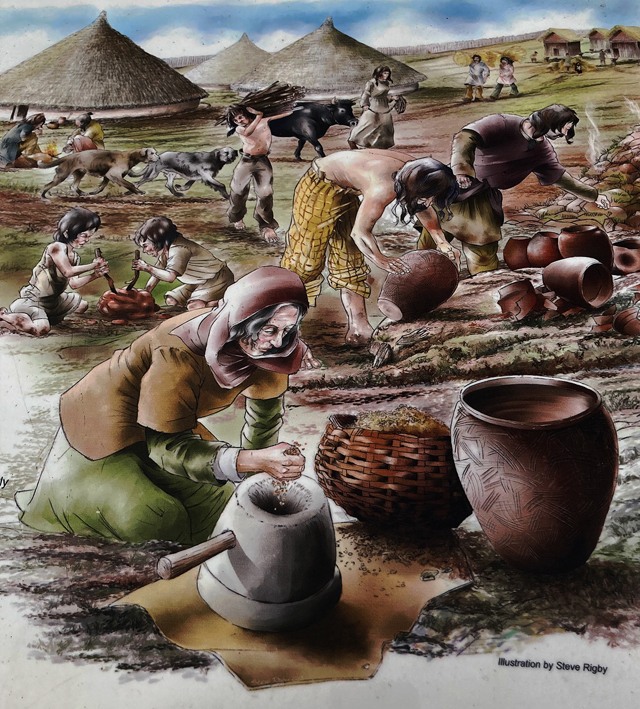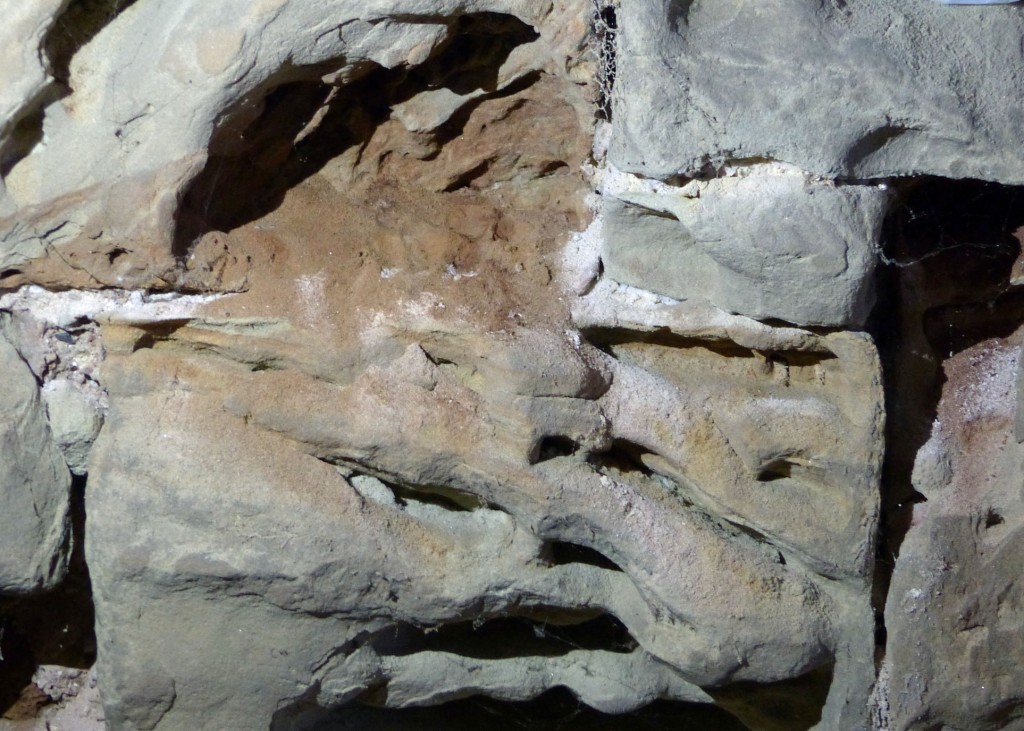It is a truly iconic building and is dramatically sited on a limestone hill being cut-away by the quarry below. It can be seen for miles around in every direction, making it the perfect setting for one of the National Beacons. The church has been a Grade I listed building since 1962, which categorises it as a building of exceptional interest. Download a quick guide to ten interesting things to check out when you visit the church.
The hill has been occupied for thousands of years, and the present church is not the first.

Whilst we will never know what the site at Breedon was called, the name we know it by is of interest in its own right. Being derived from the Celtic word ‘bre’ for hill, and the old English ‘dun’ also meaning hill, the name essentially translates as ‘Hill-Hill on the Hill’.
Occupation on the hill dates back from the late Bronze Age to the early Iron Age (c800 – 450BC) and the site was defended by a substantial wooden palisade probably constructed during the 2nd or 3rd century BC. This surrounded most of the hilltop and was built using large posts. Although the posts have long since rotted away, excavation of the deep holes that that supported them indicates that they were about 0.3m in diameter and 2.5m high presenting a considerable barrier. This wooden defence was later replaced by ramparts comprising large bank and a deep ditch, the bank being formed with soil and stones removed to form the ditch.

Although quarrying has removed the eastern side of the site, the remains of the ramparts are clearly visible along the western side, this area is known locally as ‘The Bulwarks’ and are protected as a Scheduled Ancient Monument. Look for the information panels at the southern corner of the church car park from which part of this description has been taken and further down the footpath from the church towards the village. The gate by the second panel is close to the ‘Bulwarks’ where you can enter and explore for yourslves.
In 675 AD, a monastery was founded on the hill with Hedda appointed as the first Abbot.
Breedon’s importance is also noted in the Anglo Saxon Chronicle in 731AD, when Tatwin the priest was made Archbishop of Canterbury. Breedon was again mentioned in 844AD when King Berhtwulf granted special privileges to Abbot Eanmund for his monastery at Breodune in exchange for lands elsewhere.
In 874AD, the early monastery was destroyed by marauding Danes who travelled up the nearby River Trent as part of the conquest of Anglo Saxon kingdoms. Burhed, the King of Mercia was expelled. We imagine that the monks fled and what was left behind was looted.
Fragments of crosses (remains of which are in the North aisle) from the late 9th or 10th century, after the Danes became Christians, testify that the church, if not the monastery, became active again.
After the Norman Conquest in 1066, Breedon, together with Wilson and Tonge, were granted to Robert de Ferrers by William the Conqueror. Subsequently, some time between 1109 & 1122, Robert gave the Parish Church to the Augustinian Priory of Nostell in Yorkshire. The endowment also included Breedon Market which was situated on the hilltop, although now quarried away. This period saw the church expanded by the canons to include cloisters and other domestic quarters. These former buildings begin to explain the various roof pitch marks on three sides of the present tower.
In 1223, Nostell introduced Prior Gervase to Breedon, who tried to make the priory independent. During the next 50 years, the church was remodelled with lancet windows extending to a more decorative style and vaulted aisles added.
Skipping ahead to 1441, Bishop Alnwick visited to find the priory in debt and the buildings dilapidated. He suspended one of the canons with another one finding himself in jail a few years later and awaiting trial at Leicester.
By 1518, Breedon Parish Church once again had become run down but this time responsibility probably rested with the parishioners, not the canons of the priory. By 1539, the priory is surrendered by Nostell and the parishioners found themselves with a dilapidated Parish Church and a deserted Priory Church. Perhaps in answer to a prayer, a local in the form of Francis Shirley of Staunton Harold stepped in and purchased the Priory Church from King Henry VIII after the monastic suppression. This was to be a burial place for himself and his successors and with this, parishioners petitioned for it also to serve as the Parish Church, all of which was granted. Francis Shirley took the present North Aisle for his family mortuary.
In 1784, the village almost lost its Parish Church when it was described as being in a ruinous state, particularly the walls and roof of both aisles. The tower was in such disrepair it was almost taken down. The estimated cost of £3,340 was not raised but the building was ‘substantially repaired’ leaving the essential surviving fabric of tower and church as we know it today. Further restorations were undertaken during the 19th and 20th century. In 1937, Saxon carvings were returned to the main church from the porch where they had been placed previously when part of the Parish Church was demolished.
(key dates extracted from ‘A History Guide’ available to purchase from the church porch)
In 2019, Breedon Priory Church was awarded National Lottery Heritage funding towards the repair of the stones affected by wind erosion in the bell tower, which had placed it in a perilous position. The refurbishment was completed, and the doors re-opened in 2021. This was an important time following the coronavirus pandemic which had closed the church to visitors from April 2020.


